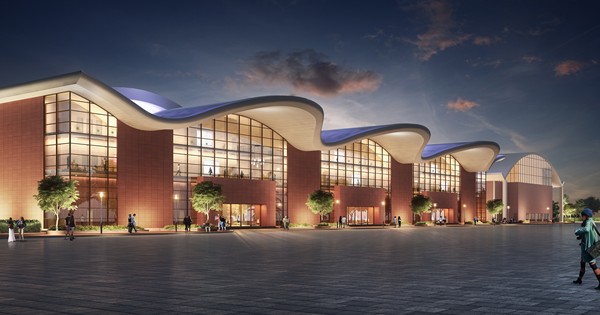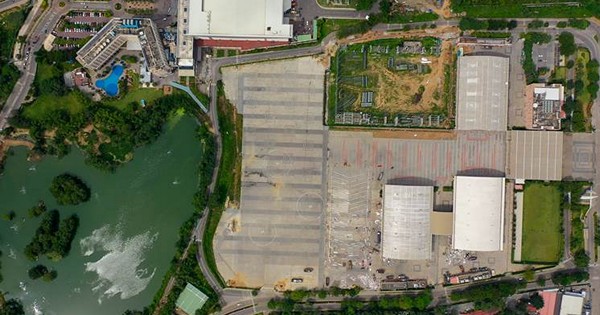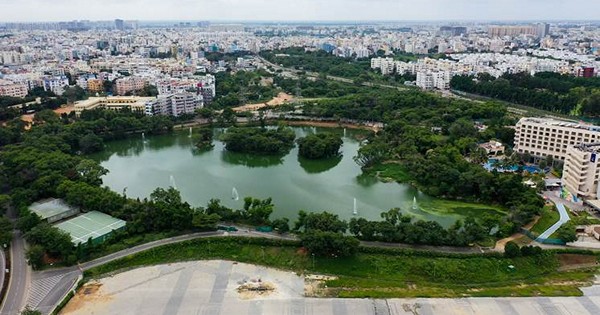There is Only One Earth

Protecting the environment has now become a compelling cause. It calls for us to be conscious of the way we consume our finite resources and seek ways to reduce, reuse, and recycle them. Mindful of the adverse impact its activities can be leaving on the environment, the events and exhibition industry too is adopting sustainable practices and making responsible choices.
Environmental protection, climate change mitigation, resource conservation, and social responsibility all depend on sustainable practices. In order to preserve ecosystems, biodiversity, and natural resources, they help us minimize resource consumption, lessen pollution, and encourage conservation. Sustainable practices combat climate change and foster a resilient future by implementing renewable energy sources, increasing energy efficiency, and lowering greenhouse gas emissions. A more inclusive and equitable society is produced by adopting recycling, waste reduction, responsible consumption, fair labor practices, ethical sourcing, and support for local communities.
Fortunately, the post-covid era is witnessing a surge in the number of events and exhibitions. Although it is a compelling reason to rejoice and celebrate the long-awaited normalcy, the other side of the coin is that there is also an increase in the amount of waste generated, energy consumed, and carbon emissions released. Cognizant of its negative impact on the environment, the Events and Exhibition industry has become focused on mitigating it and adopting environmental-friendly practices.
Thriving industry needs sustainable practices in place
Exhibitions and events are among the crucial drivers of the economy. According to a report by the market intelligence and advisory firm Mordor Intelligence, the Indian Events and Exhibition Market size is expected to grow from US$4,748.20 million in 2023 to US$8,709.61 million by 2028, at a CAGR of 12.90 percent during the forecast period (2023-2028). Adding to the forecast, the report highlights that the Government initiatives to help enterprises in different industries are expected to improve the need for events and exhibitions in the country.
Considering the industry’s potential for significant growth, the industry is proactively embracing sustainable practices essential to mitigate the adverse impact its activities may have on a larger scale. The following are a few:
Green Venue Selection: Event organizers are choosing venues that have strong sustainability practices in place. These venues may have certifications such as LEED (Leadership in Energy and Environmental Design) or focus on minimizing energy consumption, water usage, and waste generation. LEED is a globally recognized green building certification program that assesses the sustainability and environmental performance of buildings and encourages the adoption of eco-friendly practices.
Energy Efficiency: Events and exhibitions are implementing energy-efficient practices by utilizing LED lighting instead of fluorescent bulbs, energy-efficient equipment, and optimizing energy consumption throughout the event. This helps to reduce the carbon footprint associated with energy use. Some event organizers have even switched to renewable energy sources to power tradeshow booths, halls, and exhibition grounds.
Waste Management: The industry is adopting waste management strategies such as recycling, composting, and minimizing single-use items. Waste segregation systems, recycling stations, and partnerships with waste management companies are becoming common practices to minimize the environmental impact. Opting pre-fabricated, ready-to-use, and reusable booths is another way towards minimizing waste.
Sustainable Materials and Design: Event organizers are choosing sustainable materials for decorations, signage, and booths. This includes using eco-friendly materials, recycled materials, or opting for reusable items. Sustainable design principles are employed to reduce material waste and enhance resource efficiency.
Transportation and Logistics: Efforts are made to minimize the carbon footprint associated with transportation and logistics. This includes promoting public transportation, encouraging carpooling, utilizing fuel-efficient vehicles, and optimizing delivery routes. Carbon offset programs are also being considered to neutralize the emissions generated.

Digitalization and Technology: Embracing digital solutions and technology helps reduce paper usage, streamline operations, and enhance efficiency. Mobile apps, digital ticketing, and virtual exhibitions are being adopted, minimizing the need for printed materials and reducing resource consumption.
Stakeholder Engagement and Education: The industry is engaging stakeholders, including exhibitors, attendees, and suppliers, to promote sustainable practices and environmental awareness.
Educational initiatives, sustainability guidelines, and best practices are shared to encourage active participation and collaboration.
Encouraging Hybrid Events: The pandemic era taught us valuable lessons about adapting to changing times in order to stay afloat and value the resources at hand in the process. They allow for a wider reach
and participation and also reduce the carbon footprint associated with travel and resource consumption.
HITEX’s Green Practices
HITEX and Ace Urban Infocity have come together to initiate the Kotha Cheruvu Lake rejuvenation and conservation project. The lake is a precious water body located within HITEX’s perimeter. Unfortunately, due to massive urbanization, it has been deprived of its original charm. Sewage from nearby residential areas has been flowing into the lake, polluting its surroundings. As part of its corporate social responsibility, HITEX is striving to revive the lake and set a benchmark for similar projects that can be adopted by administrative bodies across India.
The lake restoration project aims at reducing pollution levels in the lake, creating a better habitat for aquatic organisms, improving the quality of water through filtration systems, providing recreational space for local residents, and providing ecotourism opportunities.
Commenting on the ongoing conservation efforts for the lake, Srikanth TG, Business Head, HITEX, shares, “The jungle growth on the lake has been successfully cleared, and efforts have been made to clean the lake and its bed of weed growth. To enhance the purification process, innovative green technology has been employed, which includes the establishment of floating beds in the lake. These floating beds play a crucial role in purifying the lake water. Furthermore, to promote better oxygenation and purification, ten surface aerators have been strategically deployed in the lake.”
“In addition to the conservation efforts, plans are underway to revitalize the lake by creating a well-defined walkway and a dedicated cycle path. These additions will not only enhance the aesthetic appeal but also provide a recreational opportunity for the visitors. Moreover, specific recreational zones will be developed, especially for children, aiming to bring people closer to nature and foster a deeper appreciation for the natural environment,” he adds.
With regard to waste management, the esteemed venue provider and events organizer is in talks with a startup company that is into waste management. “They employ procedures and manpower to segregate waste generated while setting/dismantling an expo. The segregation of the waste is based on different categories, ensuring that it can be sent for recycling instead of being disposed of in landfills,” informs Srikanth.
Furthermore, HITEX’s upcoming Hall 4 has obtained pre-certification as a Platinum-grade facility from the US Green Building Council (USGBC), which is the highest level of certification within the LEED
rating system. “This certification validates that the construction of the facility has been carried out with a minimal carbon footprint. Moreover, the operational energy consumption of the facility will be significantly reduced, resulting in substantial environmental conservation and energy savings,” he adds.
HITEX’s upcoming Hall 4 has obtained pre-certification as a Platinum-grade facility from the US Green Building Council (USGBC), which is the highest level of certification within the LEED rating system.”
Small Changes for Bigger Shifts
Avoiding Single-Use Plastics: The industry should aim to minimize or eliminate the use of single-use plastics such as plastic bottles, straws, and disposable food containers.
Minimizing Food Waste: Event organizers should work closely with caterers to accurately estimate food quantities, encourage responsible portion sizes, and implement effective food donation or composting programs.
Reducing Carbon Emissions from Travel: Encouraging virtual attendance or organizing regional events to minimize long-distance travel can be considered.
Addressing Energy Consumption of Exhibits: It is important to educate and encourage exhibitors to use energy-efficient lighting and equipment, avoid excessive power consumption, and optimize their exhibit design to minimize energy demands.
Going Digital: A way to minimize paper waste is by transitioning from traditional paper-based signs to digital signage. Embracing a complete digital registration process can lead to the elimination of the use of paper forms.
Ensuring Transparency and Accountability: Encouraging event organizers to report on their sustainability practices and progress can help foster a culture of continuous improvement.
Promoting Sustainable Sourcing: Along with embracing sustainable materials, encouraging exhibitors and suppliers to prioritize sustainable sourcing, such as using locally sourced or fair-trade products, can contribute to a more sustainable supply chain.




